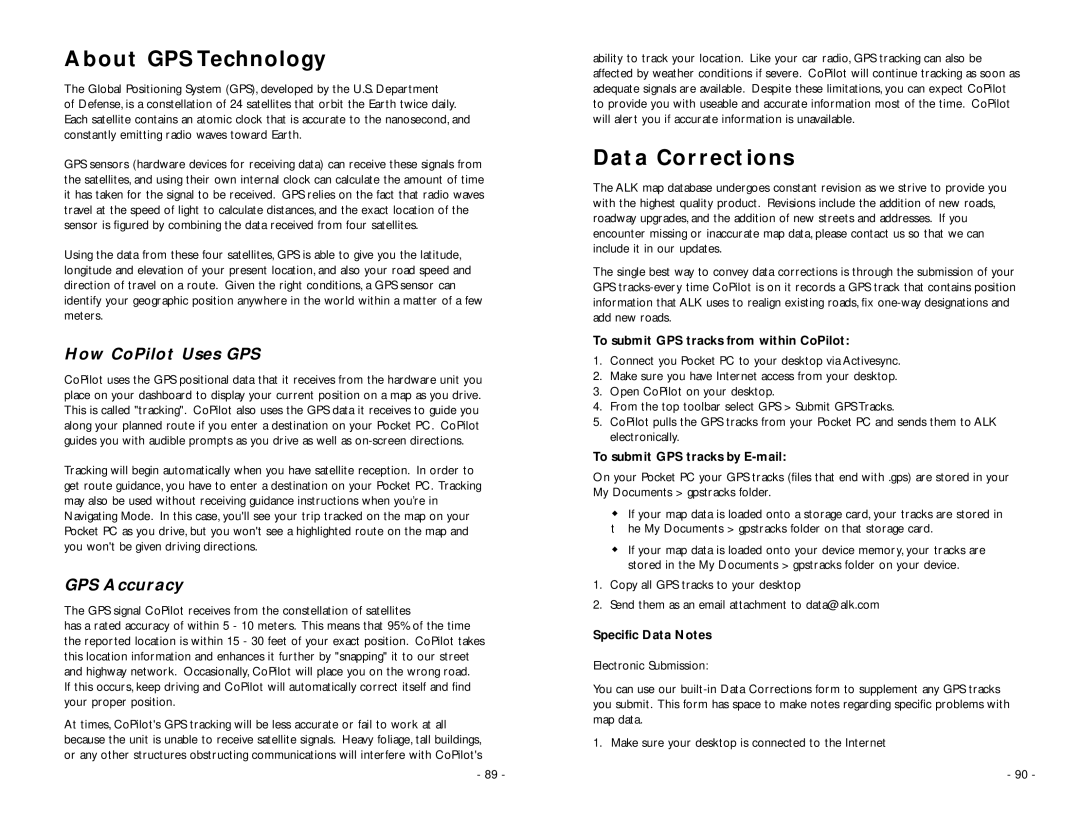About GPS Technology
The Global Positioning System (GPS), developed by the U.S. Department
of Defense, is a constellation of 24 satellites that orbit the Earth twice daily. Each satellite contains an atomic clock that is accurate to the nanosecond, and constantly emitting radio waves toward Earth.
GPS sensors (hardware devices for receiving data) can receive these signals from the satellites, and using their own internal clock can calculate the amount of time it has taken for the signal to be received. GPS relies on the fact that radio waves travel at the speed of light to calculate distances, and the exact location of the sensor is figured by combining the data received from four satellites.
Using the data from these four satellites, GPS is able to give you the latitude, longitude and elevation of your present location, and also your road speed and direction of travel on a route. Given the right conditions, a GPS sensor can identify your geographic position anywhere in the world within a matter of a few meters.
How CoPilot Uses GPS
CoPilot uses the GPS positional data that it receives from the hardware unit you place on your dashboard to display your current position on a map as you drive. This is called "tracking". CoPilot also uses the GPS data it receives to guide you along your planned route if you enter a destination on your Pocket PC. CoPilot guides you with audible prompts as you drive as well as
Tracking will begin automatically when you have satellite reception. In order to get route guidance, you have to enter a destination on your Pocket PC. Tracking may also be used without receiving guidance instructions when you’re in Navigating Mode. In this case, you'll see your trip tracked on the map on your Pocket PC as you drive, but you won't see a highlighted route on the map and you won't be given driving directions.
GPS Accuracy
The GPS signal CoPilot receives from the constellation of satellites
has a rated accuracy of within 5 - 10 meters. This means that 95% of the time the reported location is within 15 - 30 feet of your exact position. CoPilot takes this location information and enhances it further by "snapping" it to our street and highway network. Occasionally, CoPilot will place you on the wrong road.
If this occurs, keep driving and CoPilot will automatically correct itself and find your proper position.
At times, CoPilot's GPS tracking will be less accurate or fail to work at all because the unit is unable to receive satellite signals. Heavy foliage, tall buildings, or any other structures obstructing communications will interfere with CoPilot's
- 89 -
ability to track your location. Like your car radio, GPS tracking can also be affected by weather conditions if severe. CoPilot will continue tracking as soon as adequate signals are available. Despite these limitations, you can expect CoPilot to provide you with useable and accurate information most of the time. CoPilot will alert you if accurate information is unavailable.
Data Corrections
The ALK map database undergoes constant revision as we strive to provide you with the highest quality product. Revisions include the addition of new roads, roadway upgrades, and the addition of new streets and addresses. If you encounter missing or inaccurate map data, please contact us so that we can include it in our updates.
The single best way to convey data corrections is through the submission of your GPS
To submit GPS tracks from within CoPilot:
1.Connect you Pocket PC to your desktop via Activesync.
2.Make sure you have Internet access from your desktop.
3.Open CoPilot on your desktop.
4.From the top toolbar select GPS > Submit GPS Tracks.
5.CoPilot pulls the GPS tracks from your Pocket PC and sends them to ALK electronically.
To submit GPS tracks by E-mail:
On your Pocket PC your GPS tracks (files that end with .gps) are stored in your My Documents > gpstracks folder.
If your map data is loaded onto a storage card, your tracks are stored in
the My Documents > gpstracks folder on that storage card.
If your map data is loaded onto your device memory, your tracks are stored in the My Documents > gpstracks folder on your device.
1.Copy all GPS tracks to your desktop
2.Send them as an email attachment to data@alk.com
Specific Data Notes
Electronic Submission:
You can use our
1. Make sure your desktop is connected to the Internet
- 90 -
